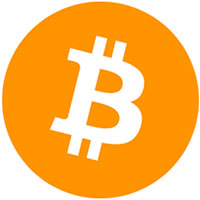Exchange-traded funds (ETFs) and mutual funds have a lot in common. These two funds both pool investor investments into a combination of securities such as bonds, commodities, and stocks. Such diversification offers exposure to investors and traders to a wide variety of asset classes. Therefore, they are popular with investors and traders, as they provide a means of diversification to their portfolios.
In this article we will discuss both types of funds and shed light on how you can invest in mutual funds or ETFs.
What are ETFs
ETFs are investment vehicles that pool funds from investors to purchase a portfolio of stocks, bonds, and other securities. The phrase exchange-traded fund refers to the fact that investors can trade ETFs on stock exchanges such as the New York Stock Exchange or Nasdaq. ETFs are commonly used to track a market index such as the Standard and Poor’s (S&P) 500 Index, which tracks the stock performance of the 500 large companies listed on exchanges in the US.
Fund companies manage these ETFs, and in exchange for the convenience of trading the ETFs, traders will pay a fee to the fund company in the form of an expense percentage or percentage of assets under management. Most ETFs are passively managed, and the expense ratio can be very low. But recently, there has been a growing number of actively managed ETFs, such as ARKK.
What are Mutual Funds
Mutual funds are like ETFs, where fund managers pool together the money from investors to buy a basket of stocks, bonds, and other securities. Investors then buy shares of the mutual funds directly from the company that issues the ETF, such as Vanguard. Mutual funds are often actively managed, where the fund manager will attempt to beat the market by buying and selling the securities with their expertise. The fund managers aim to help investors to potentially make greater returns. However, this would also result in a higher cost for investors as fund managers require more time and effort to research and analyse the securities being traded. It could also mean worse performance for the mutual funds if the fund managers fail at making the right decision.
Mutual funds were generally actively managed in previous years, however, passively managed mutual funds that track the indexes are beginning to gain in popularity.
Similarities between ETFs and Mutual Funds
As discussed above, ETFs and Mutual Funds are similar as they both pool investors’ money together to buy a basket of stocks, bonds, and other securities for a diversified portfolio. By pooling investors’ money together, they can spread their holdings across various investment vehicles, reducing the effect that any single or class of securities has on the overall portfolio. ETF or mutual funds are a collection of hundreds or thousands of securities, investors are less affected if one security underperforms.
Both ETFs and Mutual Funds are managed by fund managers or management companies and can be either actively or passively managed. These funds will then incur a cost but not all will have these fees. One example of such fee is management fee, a fee to compensate the people who make the decision of buying and selling for the fund.
Difference between ETFs and Mutual Funds
| ETFs | Mutual Funds | |
| How are the funds priced? | ETFs are traded on a stock exchange thus the market buying and selling will dictate the value of the fund which will change throughout the trading day. | Priced at their net asset value at the close of every trading day. |
| Bid-Ask Spread | Yes, there will be a spread, as the ETFs are traded regularly like stocks. | No spread incurred, as transactions only occur at net asset value pricing. |
| Trading period | Traded during the regular market hours. | Traded at the end of the trading day after the markets closes. |
| Average Expense Ratio | 0.16%. Example of some top ETFs with their expense ratio: Invesco QQQ (QQQ) – 0.2% [6] SPDR S&P 500 ETF Trust (SPY) – 0.0945% [7] | 0.60% and any additional fees such as management fees. |
| Minimum Investment Amount | Minimum amount is the price of one lot of the ETF. | A flat amount and will not be based on the fund’s share price. |
Pros of trading ETFs and Mutual Funds
- Diversification. Investors can gain wider portfolio exposure as both ETFs and mutual funds often hold a variety of stocks, bonds, and other investment assets.
- Management. A manager will oversee the work required to manage the ETFs and mutual funds. This includes the analysis, research and trading of the funds and its investment assets.
- Simplicity. Accessible to almost any investor and both are relatively straightforward to understand and invest in.
Cons of trading ETFs and Mutual Funds
- Trading Flexibility. Investors are only able to choose to buy shares of the ETF and mutual fund, but they are not able to choose which individual securities within the fund portfolio as they are determined by the fund managers. In addition, the fund managers will be in control of buying and selling of the assets in the fund.
- Market Risk. Most ETFs and mutual funds are concentrated in specific areas of the market, and although they provide a diversified mix of investment assets, both still carry the same market risk just like every other investment type.
ETFs or Mutual Funds?
Understanding the similarities and differences between the ETFs and mutual funds will help investors get a clearer idea on whether a mutual fund or ETFs is more suitable for their investment and trading objectives.
ETFs
Investors looking to explore into a specific market niche without the need to research individual companies can check out thematic ETFs. These ETFs follow macro trends, and pool together a group of stocks that fall under a single theme or industry. One example of such an ETF is the ARK Innovation ETF (ARKK) which invests in the theme of disruptive innovations with the potential of changing how the world works. For investors that are looking at tax efficiency, then ETFs are generally more tax-efficient compared to mutual funds. This is due to the ETFs unique mechanism for buying and selling that allows for the purchase and sale of assets in the fund collectively. The majority of ETFs are also passively managed which then have fewer transactions because the portfolio changes only when the underlying index changes [9]. ETFs can be traded actively. Options, short selling, stop orders, limit orders and intraday trading are some of the ways active traders can make use of trading ETFs.
Mutual Funds
Mutual funds are mainly actively managed by a fund manager who tries to outperform the market. For investors who are looking for a fund with the potential to outperform the market, mutual fund could be an option, but it is noted that these funds typically have much higher fees and tax implications. In addition, there is no assurance that the fund managers will outperform the markets. Another reason why one might use mutual funds if they want to invest in less-efficient parts of the market. Actively managed funds have the potential to outperform in these areas due to research and proper strategy implementations.
For investors who are looking to make regular deposits or dollar-cost averaging, a mutual fund which can be purchased in fractional shares could be a good option. It allows the investors full flexibility to invest in the same amount each transaction, whereas for ETFs, investors would need to invest in a full share which is reliant on the current market price.
Conclusion
Both investors and traders should do their due diligence before investing or trading in either an ETF or mutual fund. As both investment funds have their own pros and cons, it’s important that you find the suitable product to fit your investment or trading objectives. For traders looking to trade CFDs on ETFs, you may start trading with Vantage where ETFs have recently been launched for all clients. Click here to get started.

















